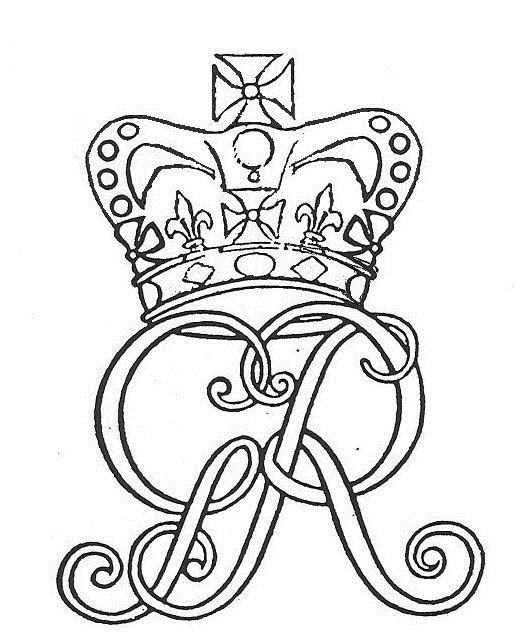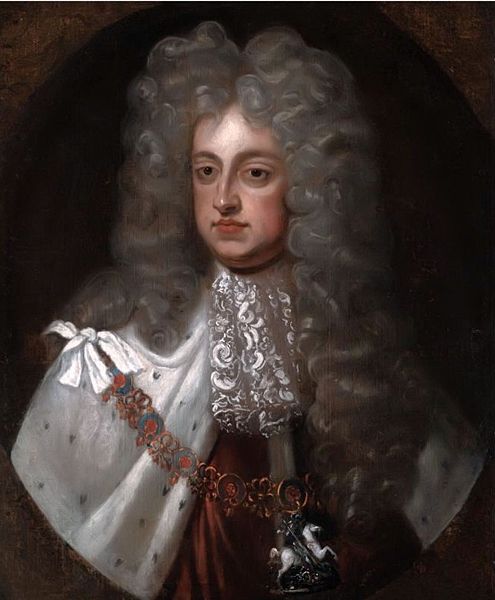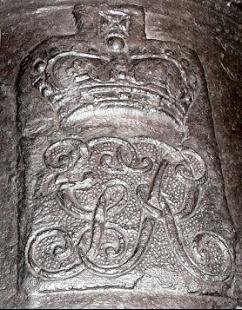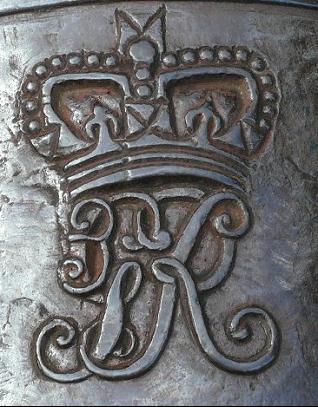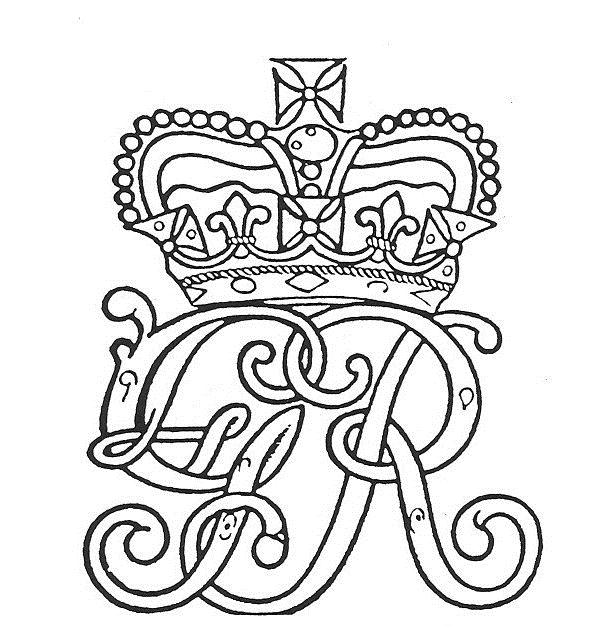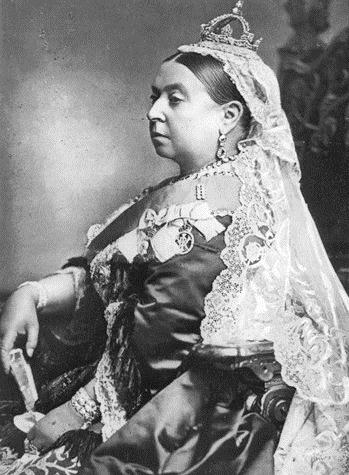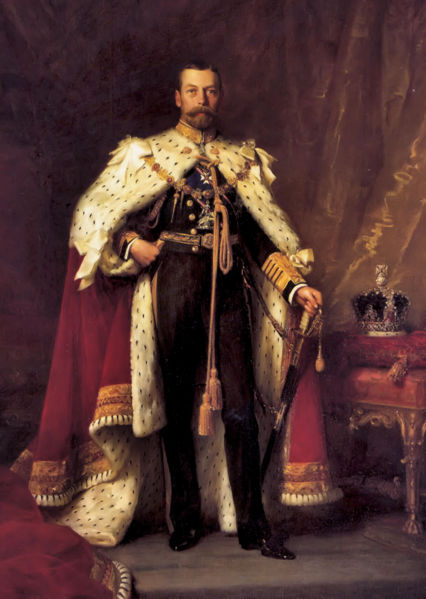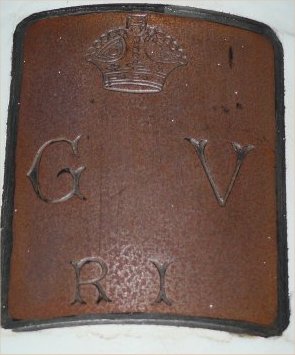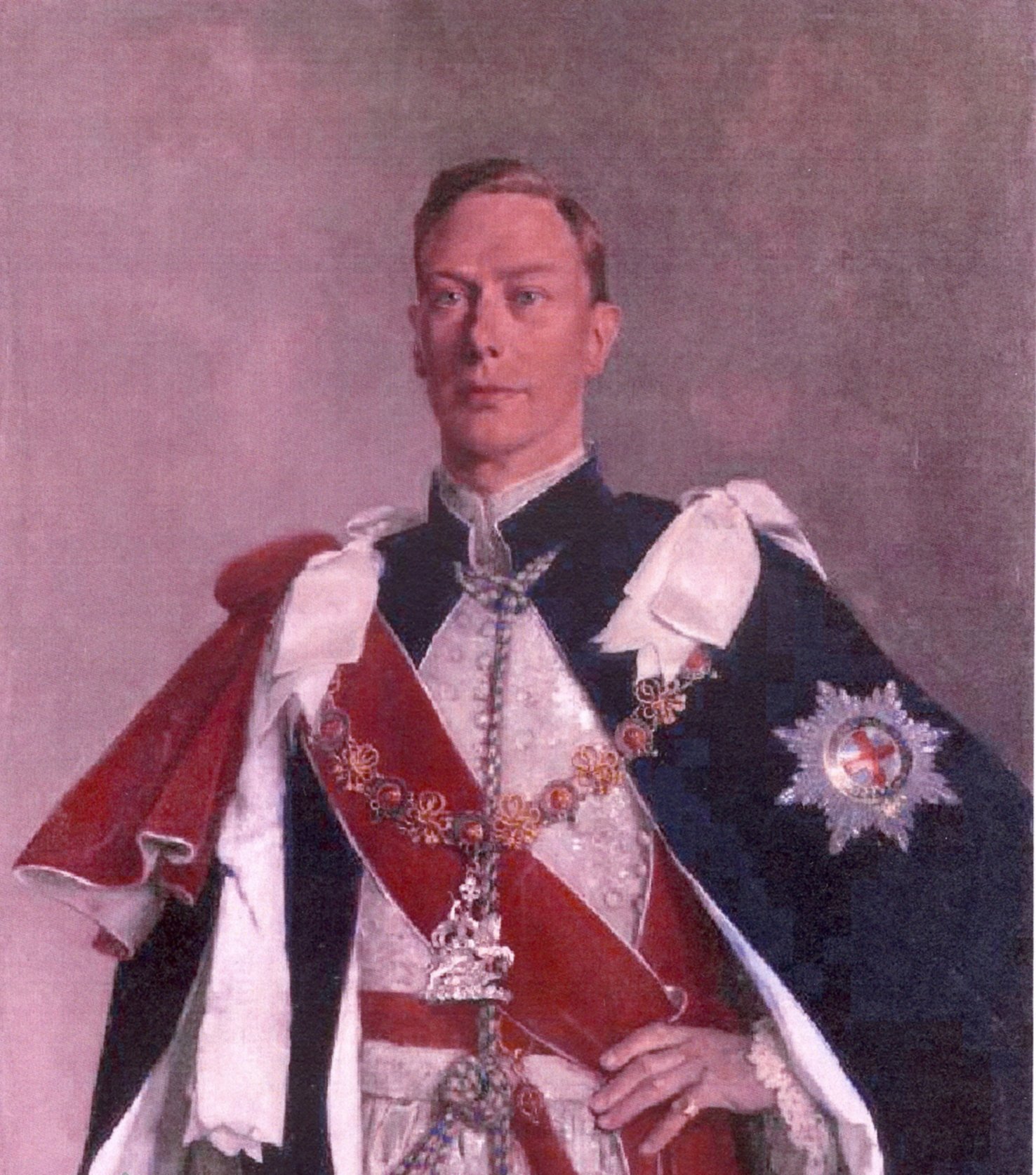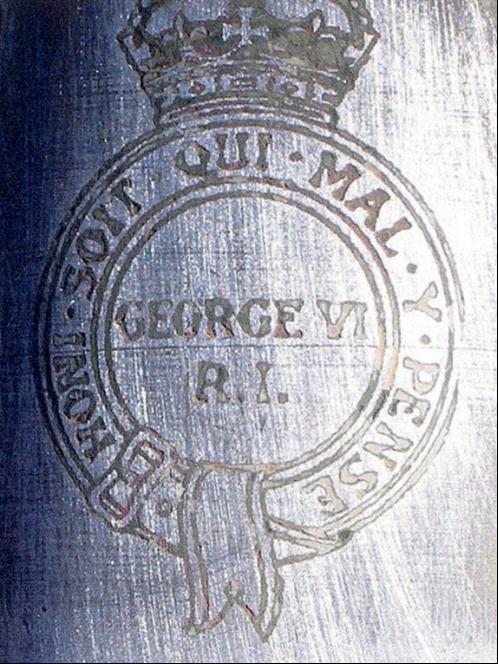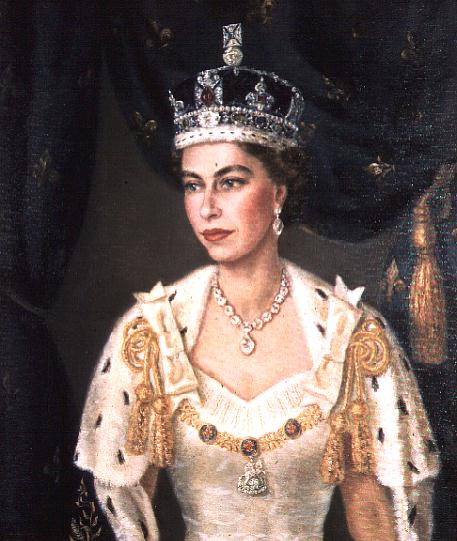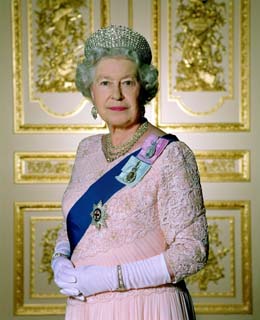| |
|
|
|
| |
|
|
|
| ARTILLERY REGISTER |
|
THE
KINGS AND QUEENS
OF ENGLAND
1714 - 2022 |
| |
|
|
|

For Use in Identifying Insignia Inscribed on Gun Barrels |
|
| |
|
|
|
King George I
1714 - 1727 |
| |
|
|
|
|
| |
|
|
|
| George I (George Louis) 28 May 1660 - 11 June 1727 |
| |
|
|
|
George I (George Louis) was King of Great Britain and Ireland from 1 August 1714 until his death on 11 June 1727. He was also the first de facto Prince-Elector of Hanover in the Holy Roman Empire.
George was born in Germany, and eventually inherited control of a large swath of Lower Saxony. A succession of European wars expanded his domains during his lifetime. At the age of 54, he ascended the British throne as the first monarch of the House of Hanover. Although 56 Catholics bore closer blood relationships to the childless Queen Anne, the Act of Settlement 1701, which prohibited Catholics from inheriting the throne, designated her cousin Sophia of Hanover as heiress to the throne. Sophia was Anne's closest living Protestant relative; however, she died a matter of weeks before Anne, leaving the succession to her son George. In reaction, the Jacobites attempted to depose George and replace him with Anne's Catholic half-brother, James Francis Edward Stuart, but their attempts failed.
During George's reign the powers of the monarchy diminished and Britain began a transition to the modern system of Cabinet government led by a Prime Minister. Towards the end of his reign, actual power was held by Sir Robert Walpole. George died on a trip to his native Hanover, where he was buried. |
| |
|
|
|
 |
| |
|
|
|
King George II
1714 - 1727 |
|
| |
|
|
|
George II (George Augustus) - 10 November 1683 - 25 October 1760 |
| |
|
|
|
| George II (George Augustus)was King of Great Britain and Ireland, Duke of Brunswick-Lüneburg (Hanover) and Arch-Treasurer and Prince-Elector of the Holy Roman Empire from 11 June 1727 until his death on 25 October 1760.
He was the last British monarch to have been born outside Great Britain, and was famous for his numerous conflicts with his father and, subsequently, with his son. As king, he exercised little control over policy in his early reign, the government instead being controlled by Great Britain's first de facto Prime Minister, Sir Robert Walpole. |
| |
|
|
|
 |
| |
|
|
|
King George III
1760 - 1820 |
| |
|
|
|
|
| |
|
|
|
| George III (George William Frederick) 4 June 1738 - 29 January 1820 |
| |
|
|
|
| George III (George William Frederick) was King of Great Britain and King of Ireland from 25 October 1760 until 1 January 1801, and thereafter of the United Kingdom, formed by the union of Great Britain and Ireland, until his death on 29 January 1820. He was concurrently Duke of Brunswick-Lüneburg, and thus prince-elector of Hanover in the Holy Roman Empire, until he became King of Hanover on 12 October 1814. He was the third British monarch of the House of Hanover, and the first of Hanover to be born in Britain and speak English as his first language.
George III's long reign was marked by a series of military conflicts involving his kingdom and much of the rest of Europe. Early in his reign, Great Britain defeated France in the Seven Years' War, becoming the dominant European power in North America and India. However, many of its American colonies were soon lost in the American Revolutionary War, which led to the establishment of the United States. Later, the kingdom became involved in a series of wars against revolutionary and Napoleonic France, which finally concluded in the defeat of Napoleon in 1815.
Later in his reign George III suffered from recurrent and, eventually, permanent mental illness. This baffled medical science at the time, although it is now generally thought that he suffered from the blood disease porphyria. Porphyria can be triggered by the poison arsenic, and recent studies have shown high levels of arsenic in locks of King George's hair. After a final relapse in 1810, his eldest son, George, Prince of Wales ruled as Prince Regent. |
| |
|
|
|
 |
| |
|
|
|
King George IV
1820 - 1830 |
| |
|
|
|
| |
|
|
George IV (George Augustus Frederick) 12 August 1762 - 26 June 1830 |
| |
|
|
George IV (George Augustus Frederick) was king of the United Kingdom of Great Britain and Ireland and Hanover from 29 January 1820 until his death on 26 June 1830. He had earlier served as The Prince Regent when his father, George III, suffered from a relapse into insanity from an illness that is now suspected to have been porphyria. The Regency, George's nine-year tenure as Prince Regent, which commenced in 1811 and ended with George III's death in 1820, was marked by victory in the Napoleonic Wars in Europe.
George was a stubborn monarch, often interfering in politics, especially in the matter of Catholic emancipation, though not as much as his father. For most of George's regency and reign, Lord Liverpool controlled the government as Prime Minister.
George is remembered largely for the extravagant lifestyle that he maintained as prince and monarch. By 1797 his weight had reached 17 stone 7 pounds (111 kg or 245 lb), and by 1824 his corset was made for a waist of 50 inches (127 cm). He had a poor relationship with both his father and his wife, Caroline of Brunswick, whom he even forbade to attend his coronation. He was a patron of new forms of leisure, style and taste. He commissioned architects John Nash to build the Royal Pavilion in Brighton and remodel Buckingham Palace, and Sir Jeffry Wyatville to rebuild Windsor Castle. He was largely instrumental in the foundation of the National Gallery, London and King's College London.
|
| |
|
|
 |
| |
|
|
King William IV
1830 - 1837 |
| |
|
|
|
| |
|
|
William IV (William Henry) 21 August 1765 - 20 June 1837 |
| |
|
|
William IV (William Henry) was King of Hanover and of the United Kingdom of Great Britain and Ireland from 26 June 1830 until his death on 20 June 1837. William, the third son of George III and younger brother and successor to George IV, was the last king and penultimate monarch of the House of Hanover.
He served in the Royal Navy in his youth and was, both during his reign and afterwards, nicknamed the Sailor King. He served in North America and the Caribbean, but saw little actual fighting. Since his two older brothers died without leaving surviving legitimate issue, he inherited the throne when he was sixty-four years old. His reign saw several reforms: the poor law was updated, child labour restricted and slavery abolished throughout the British Empire. One of the most important pieces of legislation was the Reform Act 1832, which refashioned the British electoral system. Though William did not engage in politics as much as his brother or his father, he was the last monarch to appoint a Prime Minister contrary to the will of Parliament. During his reign, his other kingdom, Hanover, was granted a short-lived liberal constitution.
At his death William had no surviving legitimate children, though he was survived by eight of the ten illegitimate children he had by the popular actress, Dorothea Bland, better known as Mrs. Jordan, with whom he cohabited for twenty years. He was succeeded in the United Kingdom by his niece, Victoria, and in Hanover by his brother, Ernest Augustus.
|
| |
|
|
 |
| |
|
|
Queen Victoria
1837 - 1901 |
| |
|
|
|
|
| |
|
|
Victoria (Alexandrina Victoria) 24 May 1819 - 22 January 1901 |
| |
|
|
| Victoria (Alexandrina Victoria) was the Queen of the United Kingdom of Great Britain and Ireland from 20 June 1837, and the first Empress of India from 1 May 1876, until her death on 22 January 1901. Her reign as Queen lasted 63 years and seven months, longer than that of any other British monarch to date. The period centred on her reign is known as the Victorian era.
Though Victoria ascended the throne at a time when the United Kingdom was already an established constitutional monarchy in which the king or queen held few political powers, she still served as a very important symbolic figure of her time. The Victorian era represented the height of the Industrial Revolution, a period of significant social, economic, and technological progress in the United Kingdom. Victoria's reign was marked by a great expansion of the British Empire; during this period it reached its zenith, becoming the foremost global power of the time.
Victoria was the granddaughter of George III, the niece of William IV, who was her predecessor and was a descendant of most major European royal houses. She arranged marriages for her nine children and forty two grandchildren across the continent, tying Europe together; this earned her the nickname "the grandmother of Europe." She was the last British monarch of the House of Hanover. |
| |
|
|
 |
| |
|
|
King Edward VII
1901 - 1910 |
| |
|
|
|
| |
|
|
Edward VII (Albert Edward) 9 November 1841 - 6 May 1910 |
| |
|
|
Edward VII (Albert Edward) was King of the United Kingdom and the British Dominions and Emperor of India from 22 January 1901 until his death on 6 May 1910. He was the first British monarch of the House of Saxe-Coburg-Gotha, which was renamed the House of Windsor by his son, George V.
Before his accession to the throne, Edward held the title of Prince of Wales and was heir apparent to the throne longer than anyone in English or British history. During the long widowhood of his mother, Queen Victoria, he was largely excluded from political power and came to personify the fashionable, leisured elite.
The Edwardian period, which covered Edward's reign and was named after him, coincided with the start of a new century and heralded significant changes in technology and society, including powered flight and the rise of socialism and the Labour movement. Edward played a role in the modernisation of the British Home Fleet, the reform of the Army Medical Services, and the reorganisation of the British army after the Second Boer War. His work in fostering good relations between Great Britain and other European countries, especially France, for which he was popularly called "Peacemaker", was unable to prevent the outbreak of World War I in 1914. |
|
| |
|
|
 |
| |
|
|
King George V
1910 - 1936 |
| |
|
|
|
| |
|
|
George V (George Frederick Ernest Albert) 3 June 1865 - 20 January 1936 |
| |
|
|
| |
| George V (George Frederick Ernest Albert) was the first British monarch belonging to the House of Windsor, which he created from the British branch of the German House of Saxe-Coburg and Gotha. As well as being King of the United Kingdom and the other Commonwealth Realms, George was the Emperor of India and the first King of the Irish Free State. George reigned from 6 May 1910 through World War I (1914–1918) until his death on 20 January 1936.
From the age of 12 George served in the Royal Navy, but upon the unexpected death of his elder brother, Prince Albert Victor, Duke of Clarence and Avondale, he became heir to the throne and married his brother's fiancée, Mary of Teck (known as "May" to her family after her birth month). Although they occasionally toured the British Empire, George preferred to stay at home with his stamp collection and lived what later biographers would consider a dull life because of its conventionality.
When George's father, King Edward VII died in 1910, he became King-Emperor. He was the only Emperor of India to be present at his own Delhi Durbar, where he appeared before his Indian subjects crowned with the Imperial Crown of India, created specially for the occasion. During World War I he relinquished all German titles and styles on behalf of his relatives who were British subjects; and changed the name of the royal house from Saxe-Coburg and Gotha to Windsor. During his reign, the Statute of Westminster separated the crown so that George ruled the dominions as separate kingdoms, preparing the way for the future development of the Commonwealth. His reign also witnessed the rise of socialism, fascism, Irish republicanism and the first Labour ministry, all of which radically changed the political spectrum.
George was plagued by illness throughout much of his later reign; he was succeeded by his eldest son, Edward, upon his death. |
| |
|
|
 |
| |
|
|
King Edward VIII
1936 |
| |
|
|
|
| |
|
|
Edward VIII (Edward Albert Christian George Andrew Patrick David); later The Duke of Windsor 23 June 1894 - 28 May 1972 |
| |
|
|
| Edward VIII (Edward Albert Christian George Andrew Patrick David; later The Duke of Windsor) was King of the United Kingdom and the British dominions, and Emperor of India from 20 January 1936, following the death of his father, George V, until his abdication on 11 December 1936. He was the second monarch of the House of Windsor, his father having changed the name of the royal house from Saxe-Coburg and Gotha in 1917.
Before his accession to the throne, Edward VIII held the titles of Prince Edward of York, Prince Edward of Cornwall and York, Duke of Cornwall, Duke of Rothesay, and Prince of Wales (all with the style Royal Highness). As a young man, he served in World War I, undertook several foreign tours on behalf of his father, and was associated with a succession of older, married women.
Only months into his reign, Edward caused a constitutional crisis by proposing marriage to the American divorcée Wallis Simpson. Although legally Edward could have married Mrs. Simpson and remained king, the prime ministers of his various realms opposed the marriage, arguing that the people would never accept her as queen. Edward knew that the ministry of British Prime Minister Stanley Baldwin would resign if the marriage went ahead; this could have dragged the King into a general election, thus ruining irreparably his status as a politically neutral constitutional monarch. Rather than give up Mrs Simpson, Edward chose to abdicate, making him the only monarch of Britain, and indeed any Commonwealth realm, to have voluntarily relinquished the throne. With a reign of 325 days, he is one of the shortest-reigning monarchs in the history of any of his countries, and was never crowned.
After his abdication, he reverted to the style of a son of the Sovereign, The Prince Edward, and was created Duke of Windsor on 8 March 1937. During World War II, he was at first stationed with the British Military Mission to France, but after private accusations that he held pro-Nazi sympathies, was moved to the Bahamas as Governor and Commander-in-Chief. After the war, he was never given another official appointment, and spent the remainder of his life in retirement. |
| |
| |
|
|
 |
| |
|
|
King George VI
1936 - 1952 |
| |
|
|
|
| |
|
|
George VI (Albert Frederick Arthur George) 14 December 1895 - 6 February 1952 |
| |
|
|
| |
| George VI (Albert Frederick Arthur George) was King of the United Kingdom and the British Dominions from 11 December 1936 until his death on 6 February 1952. He was the last Emperor of India (until 1947) and the last King of Ireland (until 1949).
As the second son of King George V, he was not expected to inherit the throne and spent his early life in the shadow of his elder brother, Edward. He served in the Royal Navy during World War I, and after the war took on the usual round of public engagements. He married Lady Elizabeth Bowes-Lyon in 1923, and they had two daughters, Elizabeth (who succeeded him as Queen Elizabeth II) and Margaret.
At the death of his father in 1936, the future George VI's brother ascended the throne as Edward VIII. However, less than a year later Edward expressed his desire to marry the twice-divorced American socialite Wallis Simpson. For political and religious reasons, the British Prime Minister, Stanley Baldwin, advised Edward that he could not marry Mrs Simpson and remain king. So, Edward abdicated in order to marry. By reason of this abdication, unique in the history of the British Isles (previous abdications were forced by military or political pressures), George VI ascended the throne as the third monarch of the House of Windsor.
Within 24 hours of his accession the Irish parliament passed the External Relations Act, which essentially removed the power of the monarch in Ireland. Further events greatly altered the position of the monarchy during his reign: three years after his accession, his realms, except Ireland, were at war with Nazi Germany. In the next two years, war with Italy and the Empire of Japan followed. A major consequence of World War II was the decline of the British Empire, with the United States and the Soviet Union rising as pre-eminent world powers. With the independence of India and Pakistan in 1947, and the foundation of the Republic of Ireland in 1949, King George's reign saw the acceleration of the break-up of the British Empire and its transition into the Commonwealth of Nations. |
| |
|
|
 |
| |
|
|
Queen Elizabeth II
1952 - |
| |
|
|
|
 |
Elizabeth II (Elizabeth Alexandra Mary) 21 April 1926 - |
| |
|
|
| Elizabeth II (Elizabeth Alexandra Mary) is the queen regnant of 16 independent states and their overseas territories and dependencies. Though she holds each crown and title separately and equally, she is resident in and most directly involved with the United Kingdom, her oldest realm; part of her lineage traces through the royal houses of England, Wessex, and Scotland for over fifteen hundred years. She ascended the thrones of seven countries in February 1952, on the death of her father King George VI.
In addition to the United Kingdom, Elizabeth II is also Queen of Canada, Australia, New Zealand, Jamaica, Barbados, the Bahamas, Grenada, Papua New Guinea, the Solomon Islands, Tuvalu, Saint Lucia, Saint Vincent and the Grenadines, Belize, Antigua and Barbuda, and Saint Kitts and Nevis, in each of which she is represented by a Governor-General. The 16 countries of which she is Queen are known as Commonwealth realms, and their combined population, including dependencies, is over 129 million. In theory her powers are vast; in practice (and in accordance with convention) she herself rarely intervenes in political matters. In the United Kingdom at least, however, she is known to take an active behind-the-scenes interest in the affairs of state, meeting regularly to establish a working relationship with her government ministers.
Elizabeth II holds a variety of other positions, among them Head of the Commonwealth, Supreme Govenor of the Church of england, Duke of Normandy, Lord of Mann, and Paramount Chief of Fiji. Her long reign has seen sweeping changes in her realms and the world at large, perhaps most notably the dissolution of the British Empire (a process that began in the last years of her father's reign) and the consequent evolution of the modern Commonwealthy of Nations.
Since 1947, the Queen has been married to Prince Philip, Duke of Edinburgh, born a prince of Greece and Denmark but after naturalisation known as Philip Mountbatten and subsequently created Duke of Edinburgh. The couple have four children. |
| |
|
|
 |
|
| |
|
|
|
| |
|
|
|
| |
King Charles 111 |
|
|
| |
|
|
|
 |
|
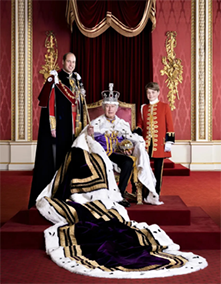 |
|
| |
|
|
|
| |
|
|
|
| |
|
|
|
| |
|
|
|
| |
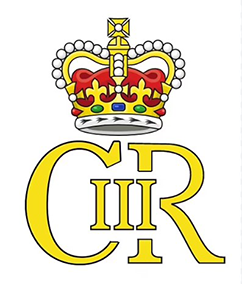 |
|
|
| |
|
|
|
| |
|
|
|
| |
|
|
|
| Charles III (Charles Philip Arthur George; born 14 November 1948) |
| |
|
|
|
| |
|
|
|
Charles III (Charles Philip Arthur George; born 14 November 1948) is King of the United Kingdom and the 14 other Commonwealth realms which are Antigua and Barbuda, Australia, The Bahamas, Belize, Canada, Grenada, Jamaica, New Zealand, Papua New Guinea, Saint Kitts and Nevis, Saint Lucia, Saint Vincent and the Grenadines, the Solomon Islands, and Tuvalu.
Charles III holds a variety of other positions, among them Head of the Commonwealth, Supreme Governor of the Church of England, Duke of Normandy, Lord of Mann, and Paramount Chief of Fiji. He is the Captain General of the Royal Regiment of Australian Artillery.
Charles was born in Buckingham Palace during the reign of his maternal grandfather, King George VI, and became heir apparent when his mother, Queen Elizabeth II, acceded to the throne in 1952. He was created Prince of Wales in 1958 and his investiture was held in 1969. He was educated at Cheam School and Gordonstoun, and later spent six months at the Timbertop campus of Geelong Grammar School in Victoria, Australia. After completing a history degree from the University of Cambridge, Charles served in the Royal Air Force and the Royal Navy from 1971 to 1976. In 1981,he married Lady Diana Spencer. They had two sons, William and Harry. Charles and Diana divorced in 1996, In 2005, Charles married his long-term partner, Camilla Parker Bowles, who has become the Queen Consort.
Charles became king upon his mother's death in 2022. At the age of 73, he was the oldest person to accede to the British throne, after having been the longest-serving heir apparent and Prince of Wales in British history.
|
| |
|
|
|
| |
|
|
|
| |
|
|
|
| |
|
|
|
| |
|
|
|
| |
|
|
|
| |
|
|
|
|









